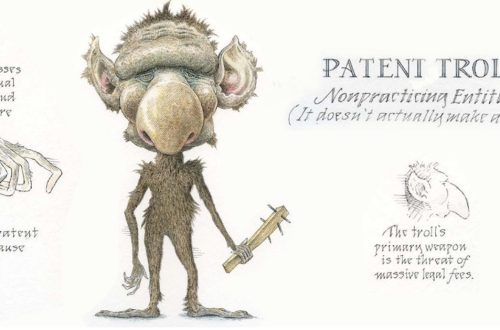By: Emily Parker
Baseball sabermetrics have grown increasingly popular over the last few years.[1] Sabermetrics refers to “the use of statistical analysis to analyze baseball records and make determinations about player performance,” popularized in part by the book (and eventually movie) Moneyball.[2] Sabermetrics appeal to both baseball fans and authors; as The Athletic’s Ben Harris described it, “many fans no longer want to just know that a pitcher is pitching well, they want to know why he’s pitching well.”[3] New metrics develop largely through informal collaboration on blogs, websites, and other online forums, where analysts and writers conduct research, publish their findings, and engage in critique and academic discussion.[4] This open-source mode of dialogue has continually advanced and refined different baseball metrics over the years.[5]
A recently-announced patent threatens the open and collaborative nature of the baseball sabermetrics community.[6] Quality of Pitch (“QOP”), referring both to the group receiving the patent and the metric being patented itself, has shaken up the baseball statistics community by not only seeking and securing a patent, but by threatening its enforcement against members of the established baseball sabermetrics community.[7] While the specific impacts of this unprecedented patent are currently unclear, some worry that this could presage a turning point for sabermetrics in baseball, possibly for the worse.[8]
Baseball sabermetrics have largely escaped patenting.[9] Baseball patents generally apply to technological advancements in viewing and measuring various aspects of the sport.[10] QOP’s newly-announced patent, however, applies to a relatively common baseball metric designed to determine pitch quality.[11] The patent’s unprecedented nature speaks to how unusual a patent for a baseball statistic may seem.[12] In order to be patentable, an invention must be a “new and useful process, machine, manufacture, or composition of matter, or any new and useful improvement thereof.” [13] The invention must also be novel; an inventor cannot secure a patent for something which was already “patented, described in a printed publication, or in public use . . . or otherwise available to the public” prior to the patent application’s filing date.[14] This would seem to prohibit a patent for QOP’s pitch metric, which is substantially similar to other statistics commonly utilized by baseball writers and analysts on the internet.[15] These qualifying criteria also notably exclude abstract ideas and mental processes — both of which are relevant to the idea of patenting a metric of the kind at issue here.[16]
The history of QOP’s patent application illuminates these peculiarities further. Based on the patent application documents, its issuance was a long time coming; the application was first published on September 17th, 2015.[17] During its journey to acceptance, the United States Patent and Trademark Office issued several rejections in response to the application.[18] In 2017, two rejections were issued under 35 U.S.C. § 102(a)(1) and 103 “based on the claimed invention’s novelty and obviousness, respectively” and another rejection three months later under 35 U.S.C. §101 “regarding the patentability of abstract ideas.”[19] While the patent application was ultimately successful, the language of its acceptance seems to suggest that it would be narrow in scope.[20] Further, it’s possible that an analyst could only infringe QOP’s patent if they were “physically in a baseball stadium using a camera or radar gun or similar sensor.”[21] The real heart of the patent is seemingly the use of technology to analyze and rate pitches “in real time using cameras and processors.”[22]
Despite this seemingly limited reach, it appears that QOP may intend to attempt legal enforcement of their patent against other members of the baseball sabermetrics community who utilize pitch quality metrics.[23] Eno Sarris and Ethan Moore, two prominent baseball analysts and writers, both received “vaguely threatening direct message[s]” at approximately the same time that QOP announced their patent on Twitter just last month.[24] The messages indicated that QOP had secured a patent “for the method of calculating pitch quality for baseball,” and concluded by saying that “any other metrics that attempt to calculate pitch quality will be an infringement on this patent and will need to cease and desist.”[25] It remains unclear whether the patent is realistically enforceable beyond an ominous direct message on Twitter.[26] Given its narrow scope, it seems unlikely that your run-of-the-mill baseball analyst or author would run afoul of the patent such that they could be successfully sued for patent infringement.[27]
Even if this patent is not likely to be legally enforceable, concerns about its effects on the baseball sabermetrics community remain.[28] One possibility is that this patent, while potentially unenforceable, could cause “patent trolling.”[29] This occurs when a patent holder “unfairly exclud[es] others from conducting additional research and work in the field.”[30] Some are also concerned about the general chilling effect that the patent’s very existence will have on young analysts who would otherwise engage in baseball sabermetrics research on an independent basis.[31] At this point, it’s still too early to tell what kind of long-term impact QOP’s patent will have on the baseball sabermetrics community. Let’s hope it doesn’t irreparably change the game for the worse.
[1] Kevin Chroust, ‘Can We Put Numbers on That?’: An Interview with Baseball Analytics Expert Eno Sarris, Sᴛᴀᴛs Pᴇʀғᴏʀᴍ, https://www.statsperform.com/resource/can-we-put-numbers-on-that-an-interview-with-baseball-analytics-expert-eno-sarris/ (last visited Oct. 24, 2020).
[2] John Brocklebank, The Truth about Sabermetrics, Sᴀᴍғᴏʀᴅ Uɴɪᴠᴇʀsɪᴛʏ (Nov. 13, 2018), https://www.samford.edu/sports-analytics/fans/2018/The-Truth-about-Sabermetrics.
[3] Ben Harris, A sabermetric primer: Understanding advanced baseball metrics, Tʜᴇ Aᴛʜʟᴇᴛɪᴄ (Feb. 28, 2018), https://theathletic.com/255898/2018/02/28/a-sabermetric-primer-understanding-advanced-baseball-metrics/.
[4] Eno Sarris, ‘You can’t own an idea’: Attempt to patent a baseball stat surprises community, Tʜᴇ Aᴛʜʟᴇᴛɪᴄ (Sept. 22, 2020), https://theathletic.com/2074516/2020/09/22/you-cant-own-an-idea-attempt-to-patent-a-baseball-stat-surprises-community/.
[5] Id.
[6] Id.
[7] Id.
[8] See id.
[9] Id.
[10] Id.
[11] Stephanie Springer, The Quality of Pitch Patent Exposes a Looming Research Battleground, Bᴀsᴇʙᴀʟʟ Pʀᴏsᴘᴇᴄᴛᴜs (Sept. 25, 2020), https://www.baseballprospectus.com/news/article/62122/the-quality-of-pitch-patent-exposes-a-looming-sabermetric-battleground/.
[12] See Sarris, supra note 4.
[13] 35 U.S.C. § 101.
[14] 35 U.S.C. § 102(a)(1).
[15] See Sarris, supra note 4.
[16] Springer, supra note 11.
[17] Id.
[18] Id.
[19] Id.
[20] Id.
[21] Moshe Wilensky, Let’s Put This Recent Pitch Quality Patent Infringement Foolishness to Bed, Cᴜʙs Iɴsɪᴅᴇʀ (Sept. 23, 2020), https://www.cubsinsider.com/2020/09/23/lets-put-this-recent-pitch-quality-patent-infringement-foolishness-to-bed/.
[22] Id.
[23] Sarris, supra note 4.
[24] Id.
[25] Id.
[26] See id.
[27] Id.; Springer, supra note 11.
[28] Sarris, supra note 4.
[29] Springer, supra note 11.
[30] Id.
[31] Sarris, supra note 4.




